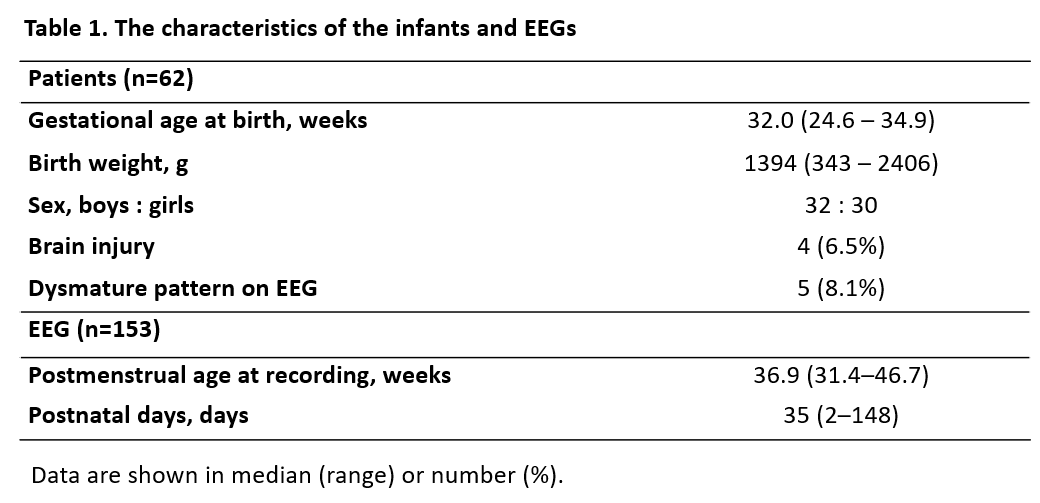Neonatal Neurology: Clinical Research
Neonatal Neurology 5: Clinical
107 - Sleep-state dependent trajectory of the incidence of brush on preterm EEG
Publication Number: 107.337
- HK
Hiroyuki Kidokoro, MD, PhD (he/him/his)
Lecturer
Nagoya University Graduate School of Medicine
Nagoya, Aichi, Japan
Presenting Author(s)
Background: “Brush” or “delta brush,” which is a characteristic intrinsic waveform on a preterm electroencephalogram (EEG), reveals the developmental changes in incidence, frequency, or morphology of brush. However, it remains uncertain whether brush changes over time differ from sleep states.
Objective: We aimed to clarify the trajectory of the occurrence of brush separated by sleep states of active sleep (AS) and quiet sleep (QS) in preterm infants.
Design/Methods:
We recruited 62 preterm infants (gestational age ≤ 34 weeks) who were born at Nagoya University Hospital between April 2020 and August 2022. All EEGs were recorded polygraphically for at least 30–40 min and contained AS and QS. At least 8 electrodes were placed at Fp1, Fp2, C3, C4, O1, O2, T3, and T4. AS, and QS were scored every 30 s based on the EEG, electro-oculography, respiratory pattern, and behavior. We explored an automated detection algorithm for brushes in the bi-polar EEG envelope after filtering at 8–25Hz with a duration of 0.3–1.2 s and an average amplitude > 10 µV within a 0.3 s sliding window. The occurrence of brush was calculated as an 8-channel average per minute. The clinical variables were gestational age, birth weight, sex, EEG dysmaturity, and brain injury on neuroimaging.
Results:
A total of 153 EEG records were included from 62 preterm infants. The infants’ characteristics are shown in Table 1. The gestational ages at birth and the recording post-menstrual age (PMA) ranged from 24.6 to 34.9 and from 31.4 to 46.7 weeks, respectively. Before separating the sleep states, the incidence of brush decreased gradually toward 46 weeks' PMA. The amplitude of brush decreased gradually and the centroid frequency stabilized between 32 and 38 weeks' PMA (Figure 1). After separating by the sleep state, the trajectory of brush occurrence was significantly different (p < 0.001): the incidence during QS was higher than that during AS after 34 weeks of PMA (Figure 2). These differences were similar in boys and girls, with or without a dysmature pattern on EEG, and with or without brain injury.
Conclusion(s):
The incidence of brush was higher during QS than AS between 34 and 40 weeks' PMA, suggesting a maturational difference between AS and QS. As the incidence of brush or delta brush is thought to be an important marker for preterm infants, it is important to assess sleep states to detect brush on preterm EEG. 
.png)
.png)
